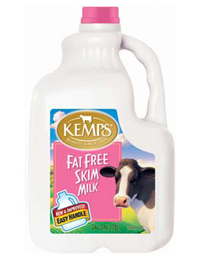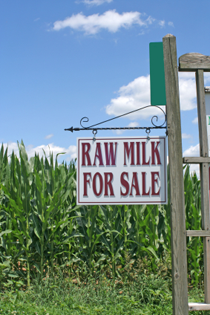




Doctors often recommend the DASH
diet to people with hypertension but
is it really the best approach?
Experts believe that up to 95% of high blood pressure problems could be resolved through healthy lifestyle changes. And among lifestyle issues diet is arguably the most important. In fact, diet is so significant to blood pressure that a complete nutritional strategy has been developed for it: the so-called DASH diet.
The cleverly named DASH plan (Dietary Approaches to Stop Hypertension) is essentially the contemporary healthy diet we’ve all come to know and love: low-fat and high-fiber with a special emphasis on restricted salt or sodium intake. But is DASH really the ideal approach to eating to reduce blood pressure? Let’s take a look at a few aspects of the diet.
The first and most striking thing you will note when researching diet for lower blood pressure is the restriction on low-fat or even non-fat dairy. This advice is so universal and strident that it’s hard to imagine any argument against it. Whole dairy foods must be deadly indeed!
The low-fat philosophy to eating has become so entrenched as to form the very foundation of modern nutrition. But the old adage “it ain’t so much the things we don’t know that get us into trouble. It’s the things we know that just ain’t so” applies perfectly here. That’s because it’s our obsession with low-fat eating, especially the rejection of natural dairy fats, that has become the greater danger.
(But you won’t hear this from the dairy councils: after all, low-fat and non-fat products are much more profitable.)

Happy cows romping in green fields
is mere advertising fantasy.
The modern dairy industry has become an abomination. Pastoral images of contented cows chewing fresh green grass has become total fantasy. Cows in modern dairy mega-farms live most of their lives confined in colossal barns with concrete floors. That’s if they live at all; the vast majority of male calves are slaughtered at birth.
Ethical concerns aside, the milk and its derivative products delivered to your neighborhood grocery store should be cause for alarm. I could go on about the growth hormones and antibiotics pumped into these unfortunate cows but for the sake of brevity let’s take it from when the milk leaves the cow.
For most people it’s obvious that pasteurization is a process that kills bacteria by heating milk to near-boiling point. What many people don’t know is that pasteurizing also kills or otherwise destroys virtually every other substance in the milk. These include the “good” bacteria that are beneficial for the gut and allow us to digest milk in the first place. Nutrients destroyed by heating also include many essential vitamins, amino acids and minerals.
The meager nutritional value milk retains after pasteurization is then further degraded by homogenization and the processing required to convert it to a low or non-fat product. Now, to add insult to injury, dairy producers try to "restore" the milk into something halfway nutritional by replacing nutrients they’ve destroyed in the first place by processing! These replacements are advertised with pseudo-healthy claims like “calcium-fortified” and “enriched with Vitamin-D”.
It’s clear that, like many processed foods, dairy products have tumbled a long way from their natural origins in the grassy fields of our ancestors...
Blood pressure is sensitive to changes in blood chemistry. Stabile blood chemistry depends on a healthy balance of nutrients, especially minerals... minerals that are stripped from milk by processing.
But isn't milk "fortified" with minerals and vitamins nowadays? Yes, but experts argue that the body does not absorb nutritional supplements the same as way it does nutrients from whole, natural foods. Many of the supplements we take, including those added to milk, are useless!
Another example of nutritional imbalance in low and non-fat dairy is that between protein and B vitamins. Even non-fat milk is very high in protein but very low in B vitamins. This imbalance contributes to a build-up of homocysteine. Homocysteine is an amino acid linked to atherosclerosis, high blood pressure and heart disease.
These are but two examples of the many nutritional imbalances produced first by pasteurization and then by further processing. Low-fat and non-fat milk and other dairy products should be pronounced dead on arrival.

Raw milk is good for the heart
and blood pressure, although it
is impractical for most of us.
The solution to this conundrum applies to all types of food: Get your supply from as close to the source as possible and maintained in as close to a whole, natural state as possible.
An example of this philosophy at work is in raw milk, which many people are starting to promote. If the idea of raw milk makes you shudder I should point out that the danger of infection from it is virtually non-existent when obtained from cows kept in good health and regularly inspected.
And did you know that lactose intolerance does not occur when consuming raw milk? Whole, natural milk comes with its own digestive enzymes that allow virtually everyone to enjoy it trouble-free. Of course these enzymes are destroyed by processing and so many people are unable to digest our supposedly healthy processed milk.
The list of health benefits from raw milk is as long as it is impressive. Stabile, healthy blood pressure and improved circulation are among them. Of course raw milk is not everyone’s cup of tea, so to speak. And for most of us it’s totally impractical simply from a lack of supply. With luck, the demand for raw milk and therefore its availability will grow.
So you can probably forget about raw milk for now but if you’re going to enjoy dairy food then get it the next best way: whole and natural. Consume less if you’re concerned about calories. But low-fat and, even worse, non-fat dairy is a nutritional red herring. Your heart and blood pressure will be happier with smaller amounts of the real thing.
Actually, none of us urgently need dairy products. In their ideal state milk and dairy products are nearly perfect foods, but their nutritional benefits can be found elsewhere. So there's no need to pursue any type of dairy foods if you simply don't enjoy them.
But the point is, this aspect of the DASH diet, along with the endless nutritional guidance we get from all corners, is built on things we know that just ain’t so!
(Misguided notions of low-fat dairy goodness are not the only pitfalls of the DASH diet. Stay tuned for the next installment!)
Discover an easy lifestyle technique for lower blood pressure that can be effective regardless of your diet and other lifestyle issues.
5 The Grange
6 St. Augustins Road
Bournemouth BH2 6NX
United Kingdom
http://www.control-your-blood-pressure.com
(1) 877-435-1985
Contact Us
info@control-your-blood-pressure.com
Toll Free (877) 435-1985
My
Natural Health Blog
 Follow Us via RSS
Follow Us via RSS
Home
The
"System"
Demo
Product Features
Clinical Trials
Real-Life Results
Articles
Videos
FAQ
About
Contact Us
14525 SW Millikan Way #36650
Beaverton, OR 97005-2343
United States
http://www.control-your-blood-pressure.com
Toll Free: (877) 435-1985